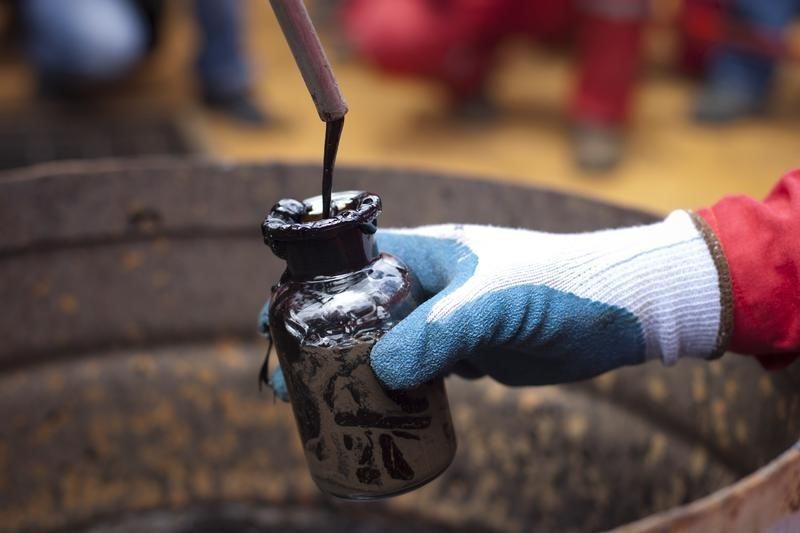Can anything shut down the Gold rally?
By Barani Krishnan
Investing.com -- Oil’s three-day rally paused on Thursday as the Keystone pipeline reopened from closure and risk assets from stocks to oil came under renewed pressure from a Federal Reserve bent on keeping interest rates up until inflation dropped convincingly.
Both U.S. West Texas Intermediate crude and U.K. origin Brent oil fell as much as 2% on the day as the dollar rose for the first time this week. By late afternoon though, both benchmarks had come off their session lows.
Brent crude for delivery in February was down 62 cents, or 0.7%, trading at $82.08 per barrel by 13:30 ET (18:30 GMT). Earlier, it hit a session low of $80.11. The global crude benchmark had risen about 8% in the past three sessions before the rally paused. The rebound came after Brent fell 11% last week, hitting a low of $75.14 — a bottom not seen since Dec 23, 2021.
WTI for delivery in January was down 20 cents, or 0.3%, reaching $77.08. Earlier, it hit an intraday low of $75.38. Like Brent, WTI rose a cumulative 8% in the past three sessions. The U.S. crude benchmark ended last week down $9.28, or 11%, making it its worst week since the week ended March 25. WTI’s session low for last week was $70.11 — a bottom not seen since Dec 21, 2021.
Oil’s weakness at Thursday’s session low was tied to the resumption of operations on a section of the Canada-to-U.S. Keystone pipeline shuttered by TC Energy (NYSE:TRP) after a leak of more than 14,000 barrels of oil in Kansas.
"Crude prices edged lower as a section of the Keystone pipeline restarted and as global recession risks increased after a wave of central banks delivered another strong round of tightening," said Edward Moya, senior market analyst at data and analytics firm OANDA.
The European Central Bank announced a 50-basis point rate hike on Thursday and said it foresaw more of such hikes to keep a lid on inflation.
The Fed, on its part, also hiked rates by 50 basis points on Wednesday. But the increase represented a slowing in rates for the first time this year by the central bank, which imposed four back-to-back hikes of 75 basis points between June and November. Fed Chair Jerome Powell said on Wednesday rate hikes will likely be a staple for the central bank until there is a convincing and credible drop in inflation.
The Fed tolerance for inflation is just 2% a year. But inflation, as measured by the Consumer Price Index, or CPI, grew by 7.1% in the year to November, although that was lower than the 40-year peak of 9.1% in June. The Fed, meanwhile, has hiked rates by 4.25% this year from a 0.25% base in March.
